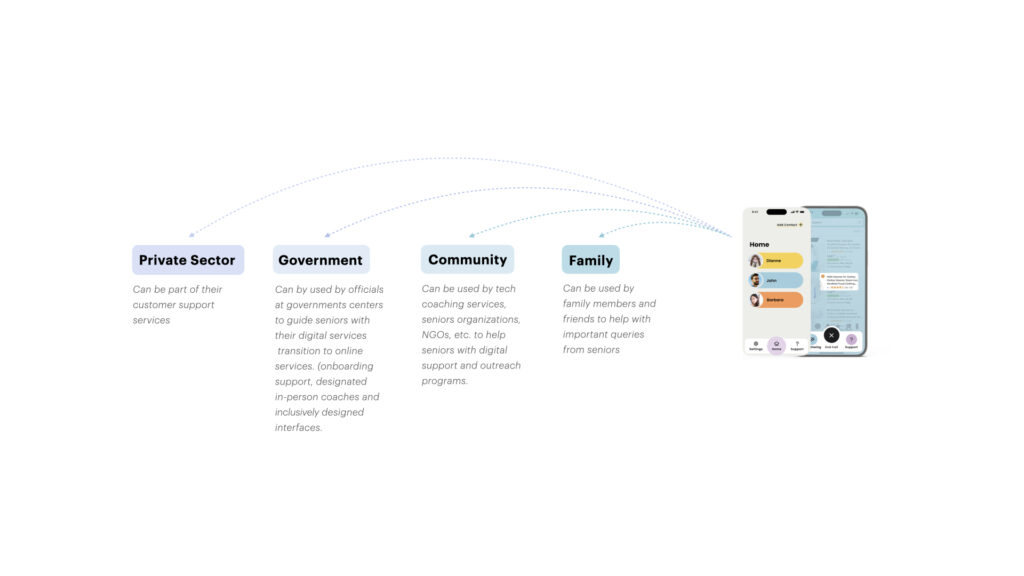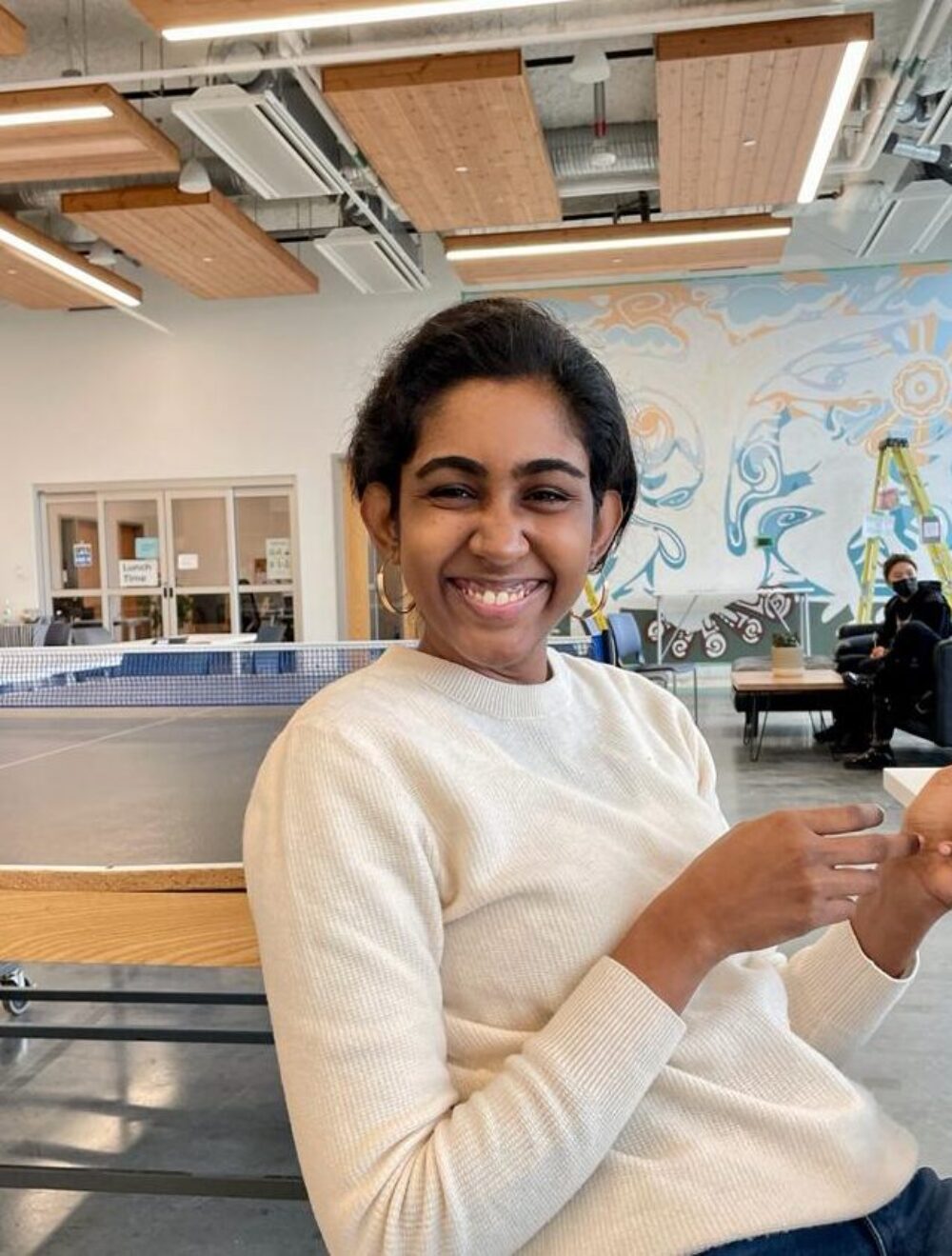Intergenerational Aid in the 21st Century
Sitalakshmi Lakshmanan
Introduction
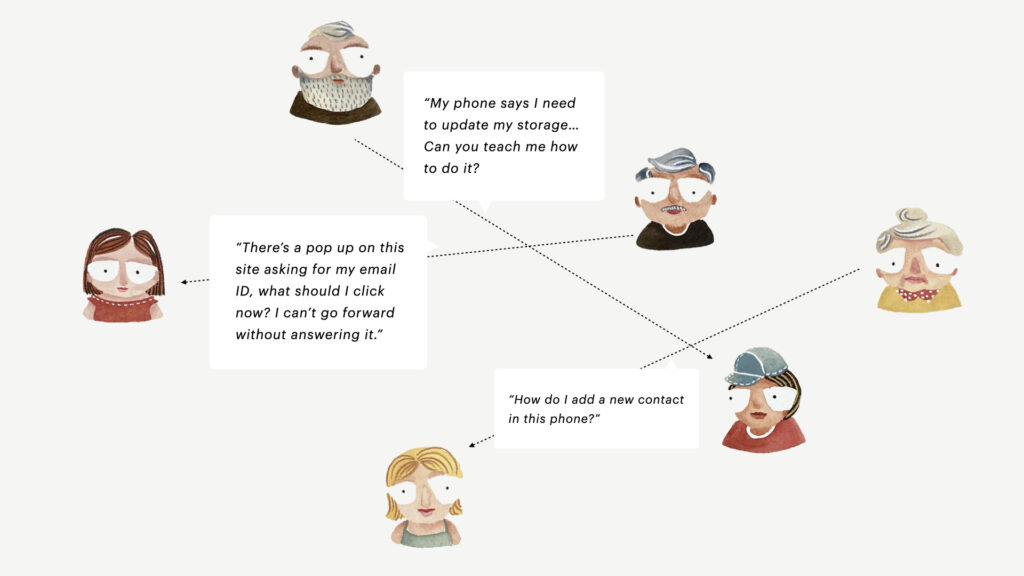
As digital immigrants of the 21st century, the current elderly always seem to have difficulty catching up with today’s technologies. When day-to-day services like banking, healthcare, travel, etc., become entirely digitized without giving seniors the required time, education, or support to get on board, it gradually chips at their independence, dignity, and agency. To keep afloat in this rapidly digitizing world, most seniors find themselves relying on assistance from the people around them, such as younger family members, neighbors, friends, and community volunteers. This research explores the various facets and multitudes of digital support that younger persons commonly provide seniors.
#warm-technology #gerontechnology #inclusive-design #accessible-design #design-for-aging #warm-experts #human-centered-design
What factors influence this intergenerational digital support between seniors and younger generations? What is the role of technology and its design in this context?
Methodology
Through 13 qualitative interviews and participatory workshops, this research delves into the perspectives and lived experiences of various stakeholders like seniors, younger generations, community volunteers, tech coaches, etc. The research is also fundamentally informed by my experience as a regular volunteer at the West End Seniors’ Network, an NGO offering social and community support for seniors in Vancouver. A precedent study of existing products helped understand the pros and practical concerns of using these digital support services for both seniors and warm experts.
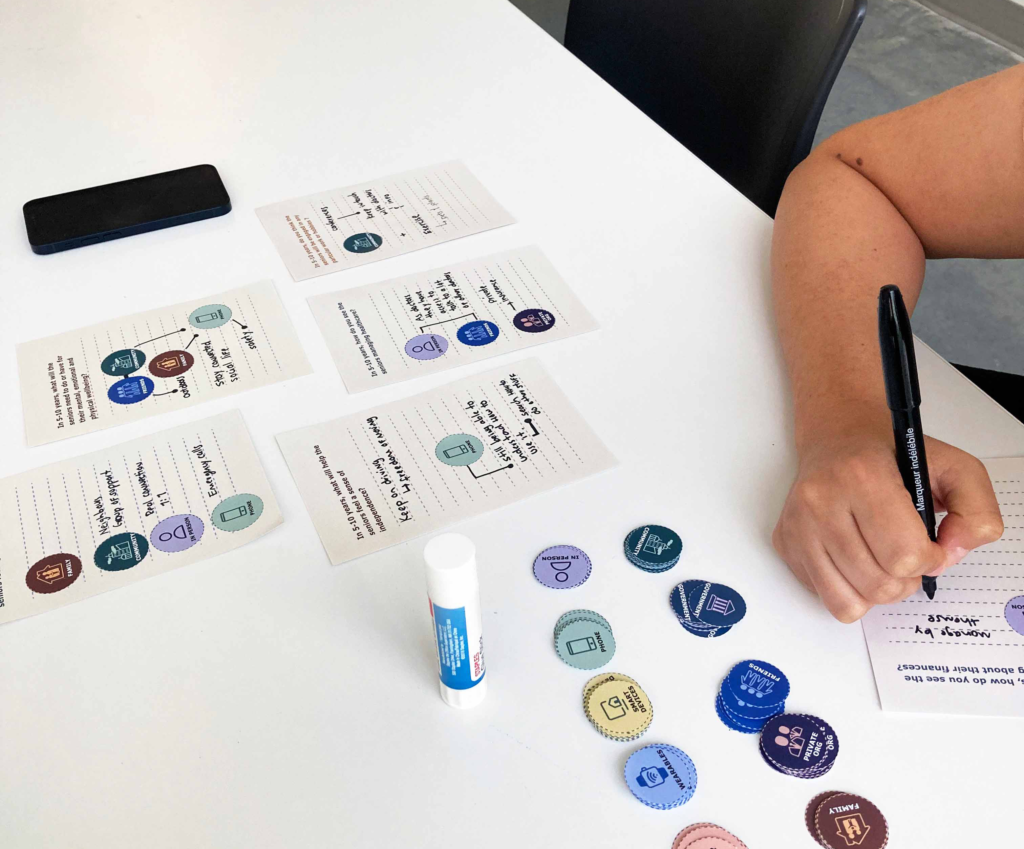
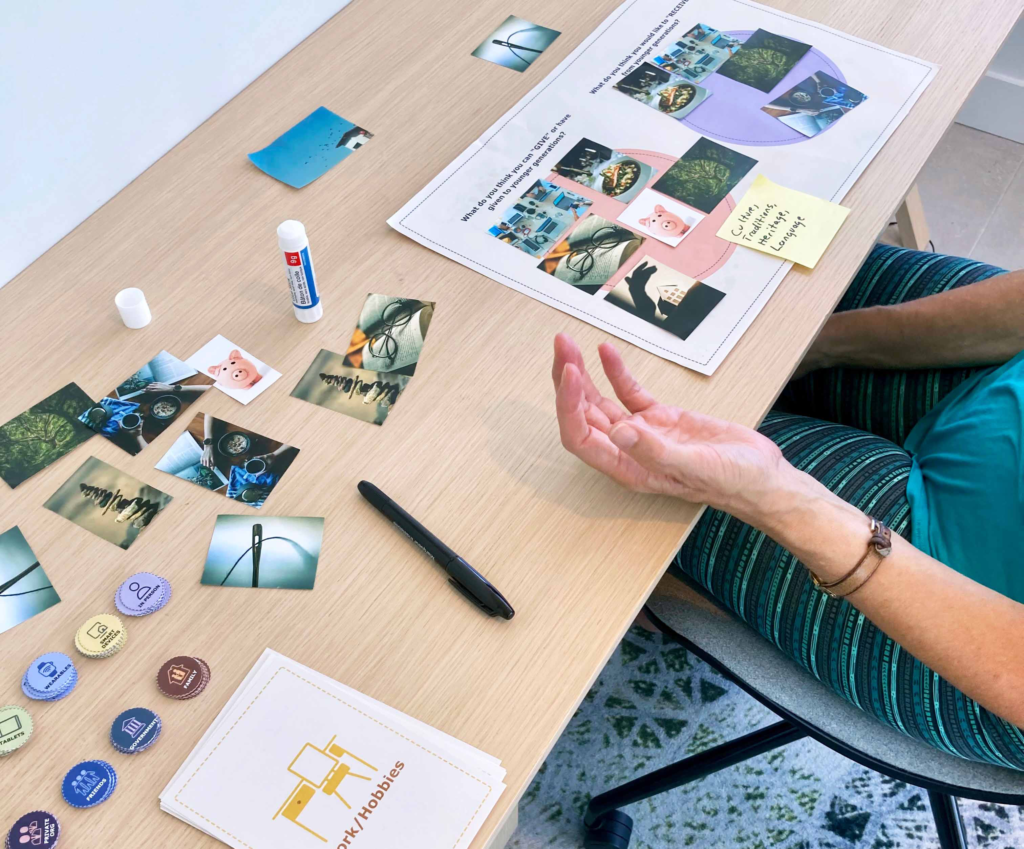
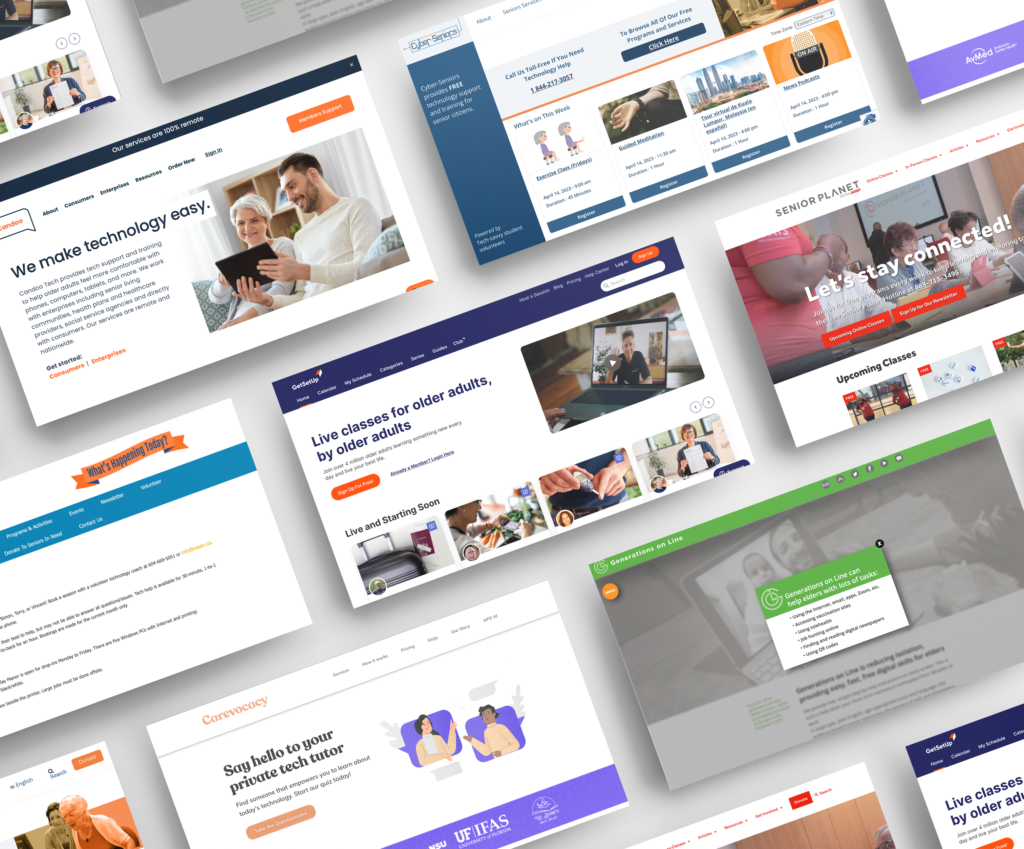
Insights
After a thorough thematic analysis of the data gathered, the paper derives key insights about intergenerational digital support under the following themes – (1) A Generational Divide, (2) The ‘Why,’ (3) The ‘How,’ (4) Benefits, and (5) Barriers. The following are some of the key Insights identified:
- Most elderly, due to their slow pace of learning, require a continuity of learning over an extended time for them to achieve familiarity.
- Rapidly evolving tech and frequent updates make the elderly feel like they constantly need help to achieve familiarity.
- A lack of accessible user interfaces, inclusive onboarding experiences, and sufficient troubleshooting features makes it difficult for seniors to adopt technologies independently.
- Seniors heavily rely on the trust, goodwill, and personal rapport established within human relationships to expose themselves to new digital experiences.
- Feelings of intergenerational reciprocity and filial piety in relationships often motivate both elderly to ask for help and younger generations to provide digital support.
- Coming to some of the barriers, Though younger persons want to help seniors, they sometimes lack the time and patience due to their busy lives.
- Some younger persons are also demotivated by the general unwillingness and distrust seniors sometimes have to try new technologies. This process is made more tiring for younger generations by the lack of apt technological tools and aids.
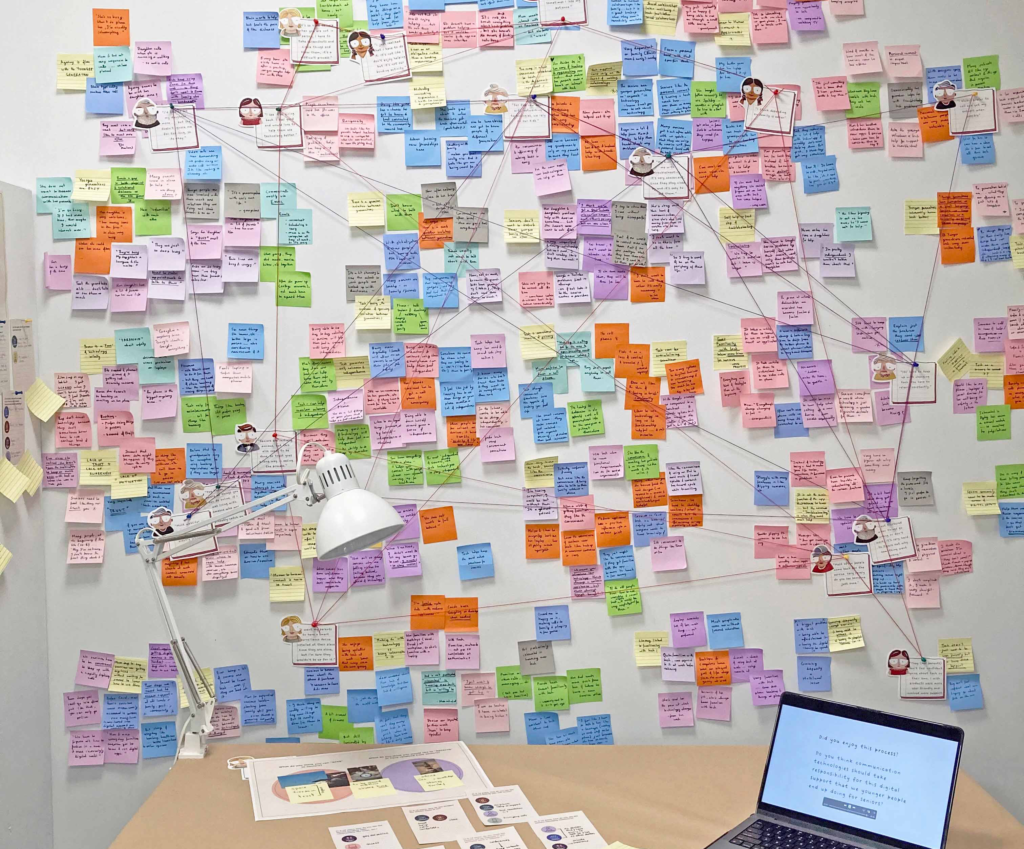
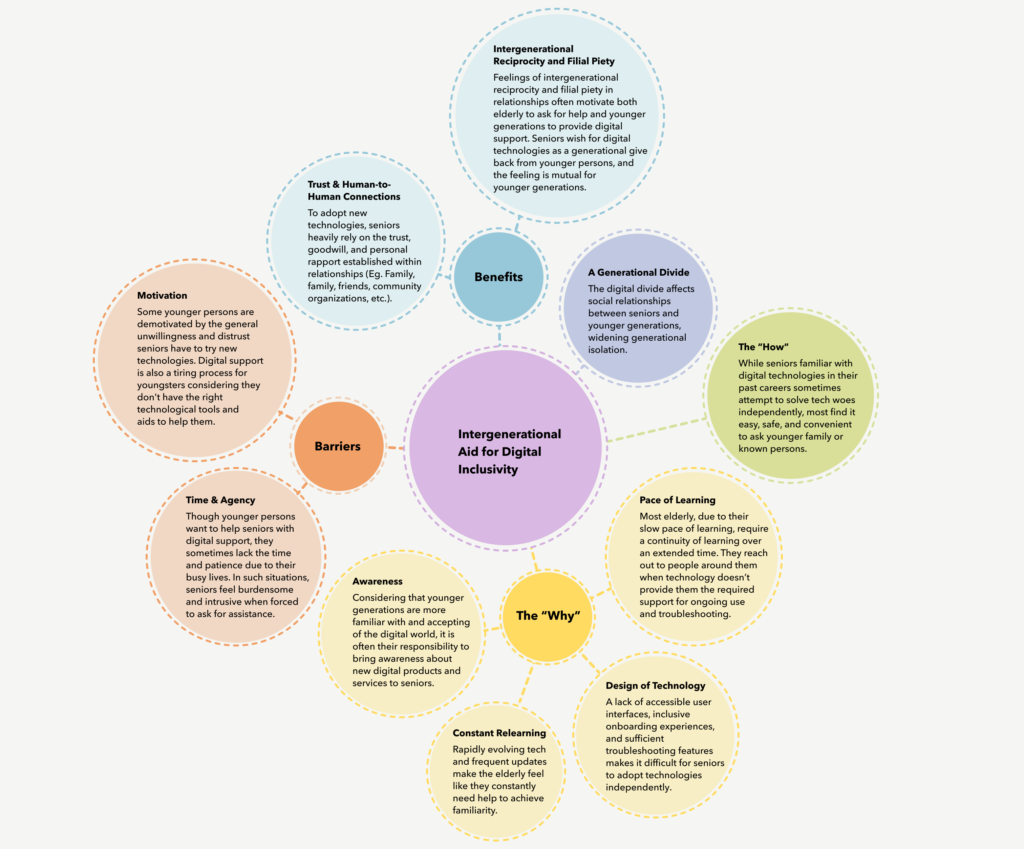
What Next
With these insights, the research attempts to situate the role of intergenerational aid in the broader picture of digital inclusivity for seniors. Intergenerational support is but a facet of this wicked problem; there are other stakeholders who also share responsibility in keeping seniors apace with the digital world. Though seniors like relying on younger family or friends and younger persons want to help, on a practical scale, the quantity and frequency of support required is too much to bear by just the younger generations. Other stakeholders in this picture, like the community, governments, and technology companies, must acknowledge their responsibility and shoulder this burden. There needs to be collective action from each of these stakeholders to truly progress with regard to bridging this digital divide.
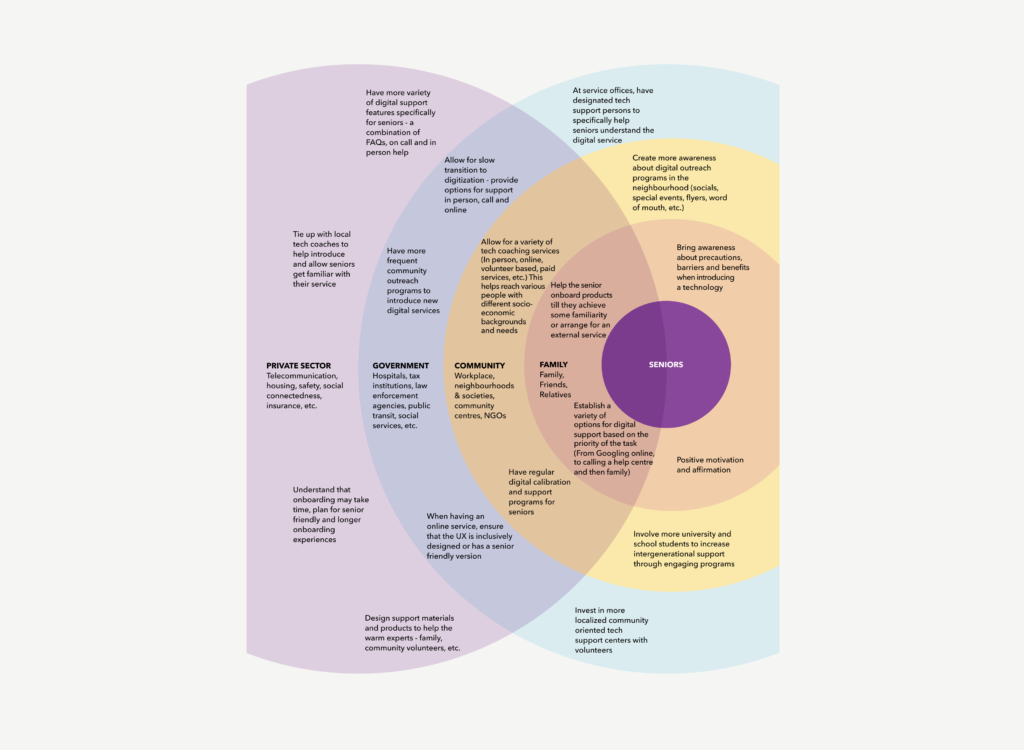
Designed Outcome
While a systemic change of the scale proposed would take a long time to come into effect, we could now take small steps and solutions to contribute towards the larger goal, like capitalizing on the benefits of this already widespread intergenerational digital support and easing its barriers. While intergenerational digital support cannot remain a singular answer to the bigger crisis at hand, it can remain an efficient, quick fix until we start seeing more systemic changes. And even then, it can continue being one of the more affectionate systems of support for a senior. Informal digital support has the potential to create and maintain intergenerational relationships, a valuable asset in this age of widening generational isolation. In light of this, a mobile application is designed and prototyped to facilitate digital aid between seniors and younger persons, focusing on ease, efficiency, and warmth.
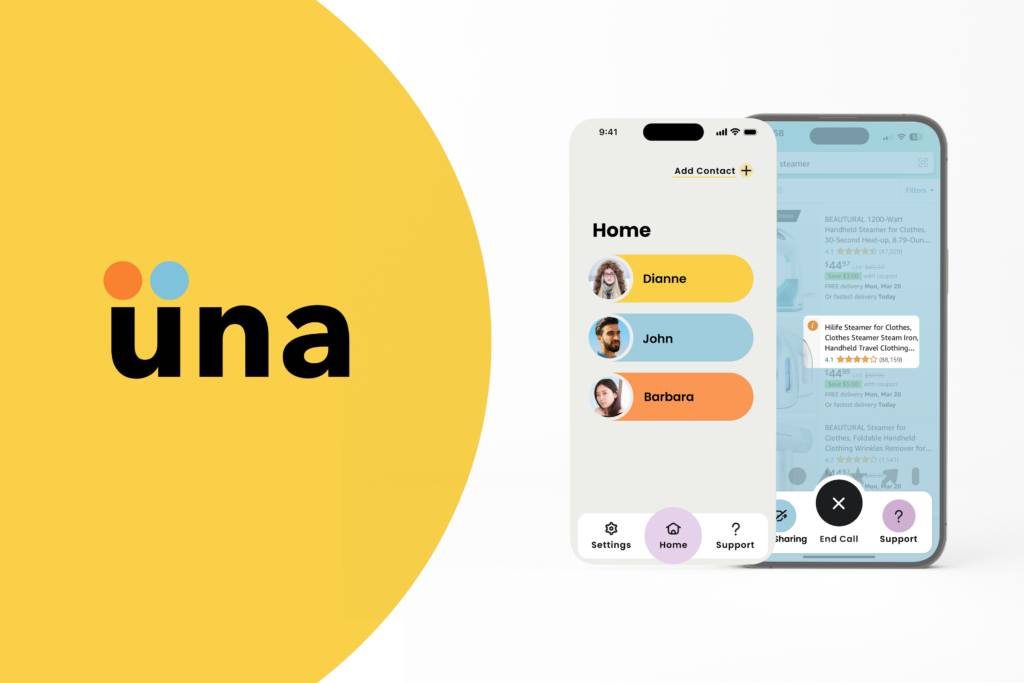
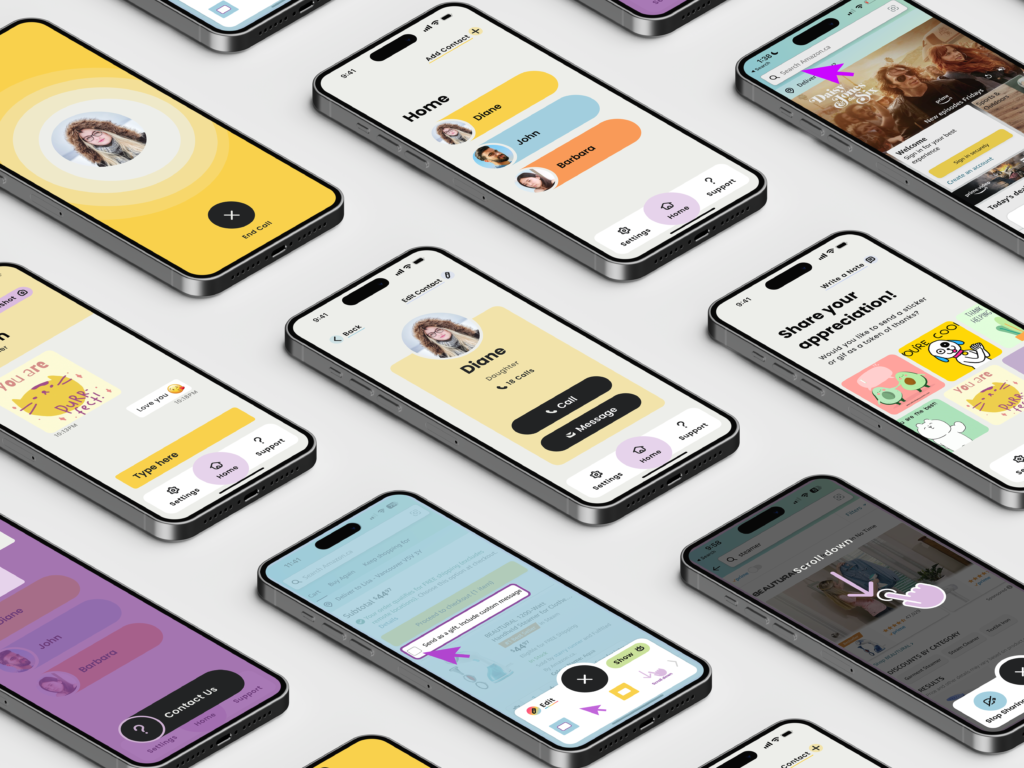
Named in the spirit of togetherness and oneness, Una allows seniors to call and share their screens with known younger persons to receive digital assistance. The warm experts are provided with a variety of visual guides like masks, pointers, gestures, etc., while screen sharing to efficiently guide and support the seniors. At the end of a call, with the aid of Una’s curation of warm gifs and stickers, seniors can reciprocate their gratitude to younger persons, allowing relationships to build and grow positively.
This video takes you through the key features of Una with the use case of a daughter, Diane, teaching her aging mother, Lisa, how to buy a product on Amazon.
On the left, are Lisa’s screens, and on the right, are Diane’s. This is to help understand the two versions of Una, one for the warm expert and the other for the senior.
Additional features:
- A feature for seniors to click screenshots via Una and send it to the warm expert, considering that the typical action of clicking a screenshot on the phone is difficult for many seniors. This way, in case younger persons are busy and don’t have time for a call, they can still help the senior by adding visual guides on the screenshots and sending them back.
- Allowing a new contact to be added only after confirmation with a video call from the senior’s side, ensuring safety and agency for the senior.
- A toggle button that younger persons can use to indicate when they are busy and unavailable to help with digital queries.
- A support feature is available on each screen, explaining the workings of that particular screen, to help seniors slowly acclimate themselves to Una till they achieve a certain level of familiarity.
Benefits of Una
The convenience and speed that Una provides with digital support would save time and energy, which are precious commodities for younger persons. The variety of visual guides also makes the overall learning process more inclusive, comfortable, and easier for seniors. With intergenerational digital support already being a widespread and preferred option, Una can ease the experience for all generations involved until other stakeholders, like technology companies and governments, share the burden of digital inclusivity for seniors. Una intends for seniors and younger generations to rely positively on each other for digital support as an opportunity to grow and mutually benefit from their intergenerational relationships.
Una, as a warm and simple application, also has the potential to transcend beyond known relationships and act as a bridge between seniors and communities, governments, private sectors, etc. This reduces the burden on family members and creates multiple tiers of support for a senior.
